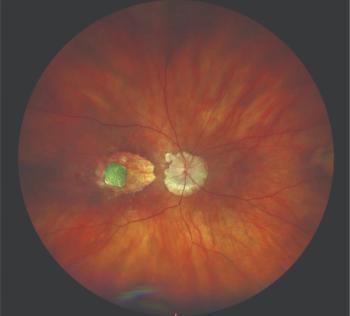
Aspheric IOL helps reduce higher-order aberrations
San Francisco-Both the SA60AT (AcrySof, Alcon Laboratories) and the SN60WF (AcrySof IQ, Alcon) IOLs are associated with excellent visual acuity outcomes after cataract surgery. However, with its aspheric optic, the SN60WF significantly reduces higher-order aberrations (HOAs) and results in greater improvement in contrast sensitivity as well as patient satisfaction with visual function, said Helga P. Sandoval, MD, at the annual meeting of the American Society of Cataract and Refractive Surgery.
Outcomes assessed included uncorrected visual acuity (UCVA) and best-corrected visual acuity (BCVA), photopic contrast sensitivity, HOAs measured at a 5.5-mm pupil using the LADARWave aberrometer (Alcon), and responses on the 39-item National Eye Institute-Visual Function Questionnaire (NEI-VFQ). Statistical analyses compared changes from baseline within each group and between groups.
The SN60WF was developed using the same single-piece, acrylic platform of the SA60AT but its optic is aspheric to reduce HOAs. It incorporates Alcon's proprietary blue light-filtering chromophore. The aspheric design is created by reducing the posterior center thickness of the lens without increasing edge thickness.
The study enrolled 30 patients undergoing routine phacoemulsification who were randomly assigned to bilateral implantation of the spherical or aspheric IOL. Three patients withdrew informed consent after randomization but prior to surgery and a fourth patient withdrew informed consent after undergoing surgery in the first eye.
Preoperatively, there were no significant differences between the groups in terms of mean age (~70 years), cataract density (~2), or mean spherical equivalent (SE), although the eyes in the SA60AT group were myopic on average (mean SE –1.19 D) whereas the mean SE in the aspheric IOL recipients was slightly hyperopic (+0.37 D).
Good visual outcomes
Both groups achieved excellent vision outcomes. At 3 months, mean logMAR UCVA was about 0.05 in both groups and mean logMAR BCVA was about 0.02.
In contrast-sensitivity testing at 1 month, both implants were associated with improvements from baseline at all spatial frequencies tested (3, 6, 12, and 18 cpd). However, for each spatial frequency, the changes were greater in the SN60WF group and consistently clinically significant (>0.15 log units increase), whereas the improvements in the SA60AT group were clinically significant only at 12 and 18 cpd. At 3 months, both IOLs were associated with statistically and clinically significant improvements from baseline at all tested spatial frequencies. The changes were greater for the SN60WF at 3 and 6 cpd, similar for the two IOLs at 12 cpd, and favored the SA60AT at 18 cpd.
Differences between IOL groups were also seen when the contrast sensitivity outcomes in individual eyes were analyzed for overall change, using the criterion of a change of more than 2 levels at two or more spatial frequencies to define decreased or increased contrast sensitivity.
Newsletter
Don’t miss out—get Ophthalmology Times updates on the latest clinical advancements and expert interviews, straight to your inbox.





